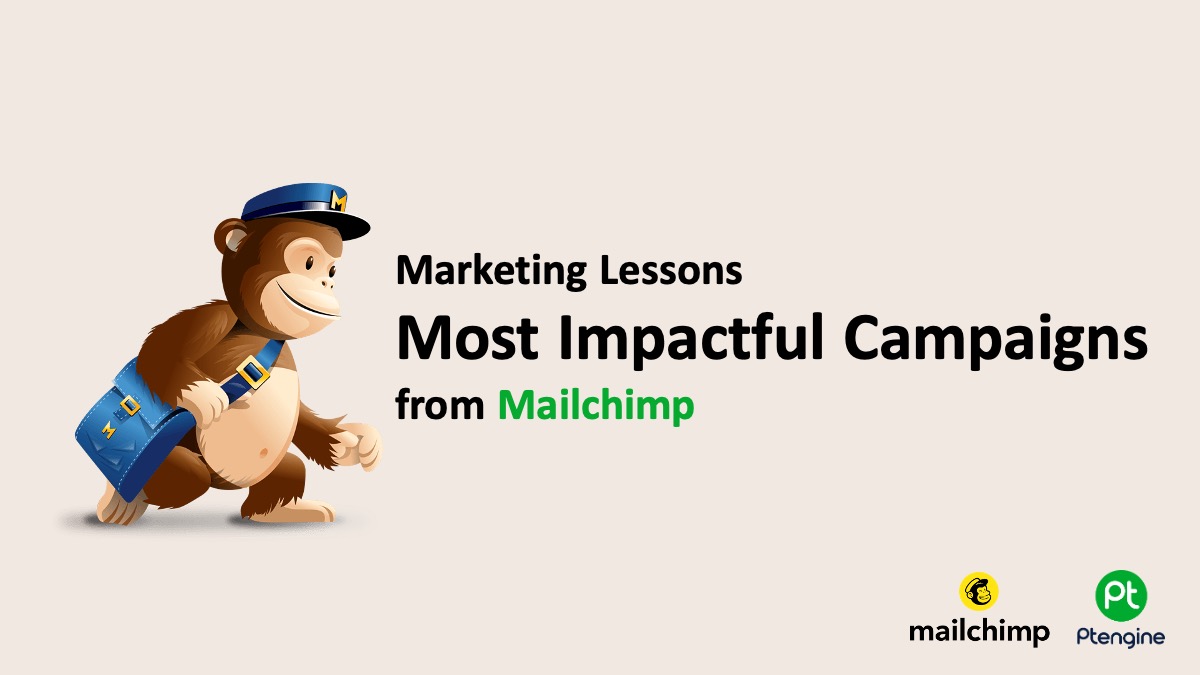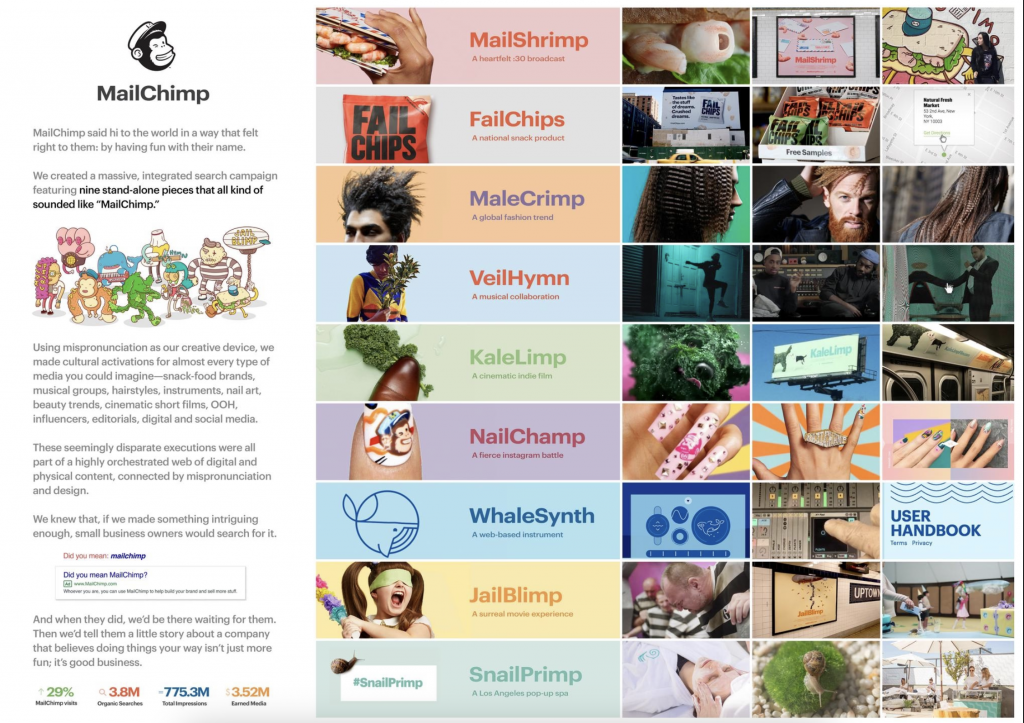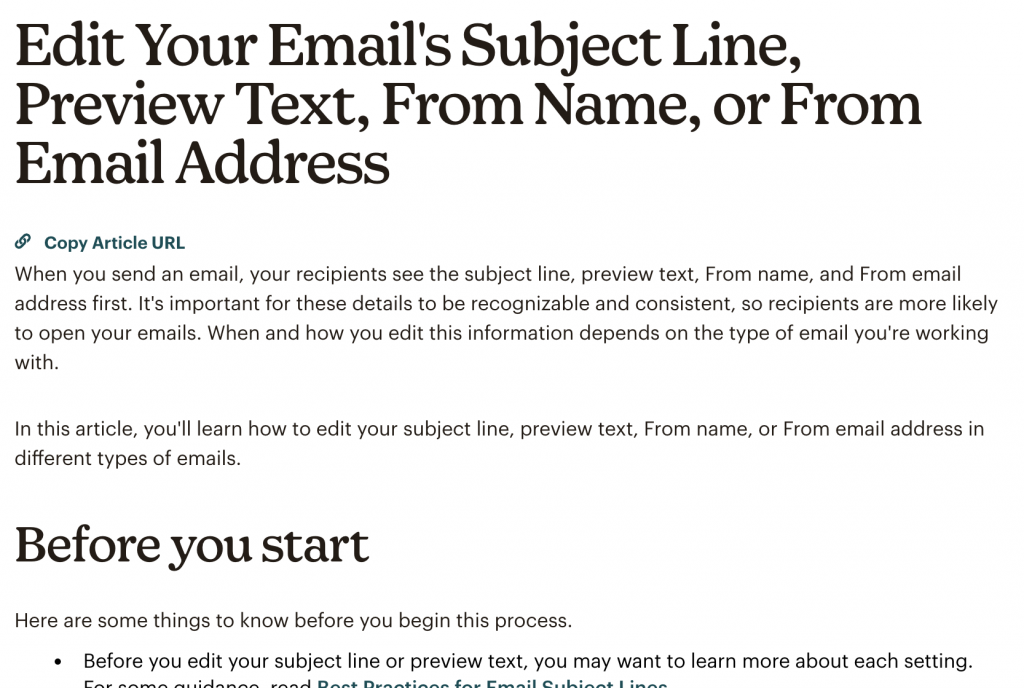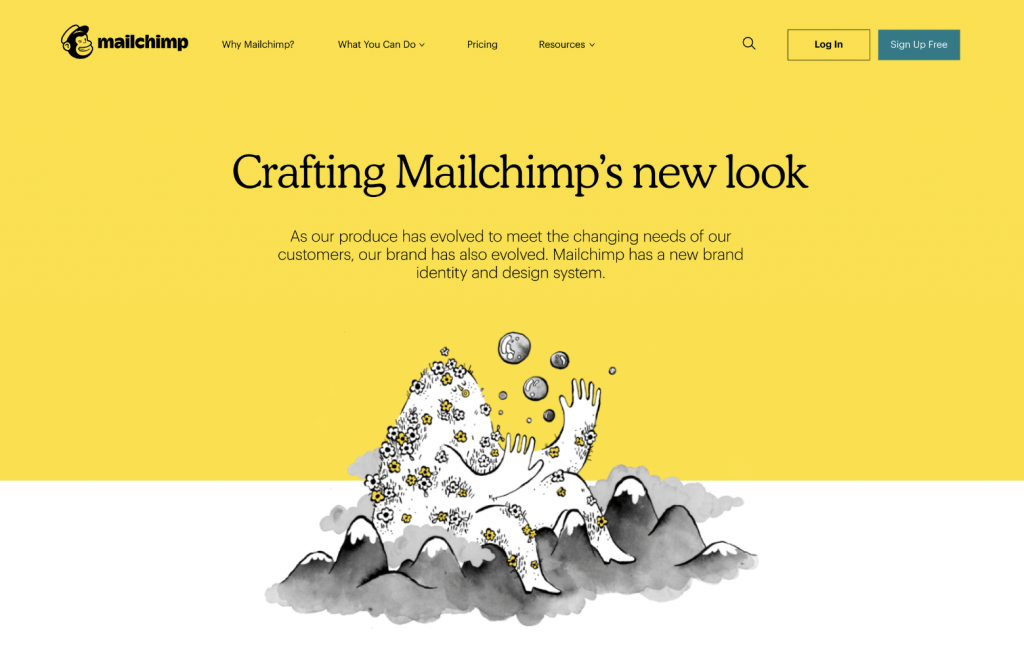blog»Digital Marketing»What Marketers Can Learn from Mailchimp’s Most Impactful Campaigns

What Marketers Can Learn from Mailchimp’s Most Impactful Campaigns
2024/10/29
You can read this article in about 24 minutes
Introduction
Mailchimp has become much more than an email marketing platform—it’s a brand that’s redefined how small businesses and entrepreneurs connect with their audiences. From clever, humor-driven campaigns to content that genuinely supports and inspires, Mailchimp’s marketing isn’t just about selling a service; it’s about building a community. Their campaigns speak directly to small business owners, freelancers, and creatives, showing them that marketing can be fun, approachable, and empowering.

In this article, we’ll look at some of Mailchimp’s most impactful campaigns and unpack what makes each one resonate so strongly with its audience. By diving into these examples, you’ll gain practical insights on how to create marketing that’s authentic, builds loyalty, and engages your audience in memorable ways. Let’s take a closer look at what marketers can learn from the creative strategies behind Mailchimp’s success.
Campaign 1: “Did You Mean Mailchimp?”
Mailchimp’s “Did You Mean Mailchimp?” campaign turned a common problem—people frequently misspelling their brand name—into a playful and memorable marketing initiative. Instead of correcting people, Mailchimp embraced the misspellings with humor, creating ads around variations like “MailShrimp,” “WhaleSynth,” and “KaleLimp.” Each misspelled version became its own quirky video ad or product mock-up, showcasing the brand’s creative, approachable personality.

The goal of this campaign was to make Mailchimp memorable, and it succeeded by turning a potential branding hiccup into a viral marketing success. By making fun of itself, Mailchimp not only connected with its audience but also established itself as a brand with a sense of humor, one that small business owners could relate to.
What You Can Learn:
- Embrace imperfections and be relatable: Mailchimp’s campaign worked because it acknowledged a common mistake and turned it into something endearing. For marketers, embracing imperfections or challenges can humanize your brand and make it more relatable.
- Use humor to build brand affinity: The humor in “Did You Mean Mailchimp?” helped create a memorable and positive association with the brand. Marketers can use humor as an effective tool to connect emotionally with their audience and make campaigns more engaging.
- Turn challenges into opportunities: What could have been a branding setback became a successful campaign. If your brand faces a recurring issue, consider how you might use it creatively to reinforce your identity and engage your audience.
The “Did You Mean Mailchimp?” campaign is a reminder that a little self-awareness and humor can go a long way in building customer loyalty. By using a lighthearted approach, Mailchimp showed that even challenges can be transformed into marketing successes.
Campaign 2: Mailchimp Presents
Mailchimp’s Mailchimp Presents campaign went beyond traditional marketing by creating a dedicated platform for original content aimed at small business owners and entrepreneurs. Mailchimp Presents offered an array of short films, series, and podcasts designed to inspire and support the entrepreneurial spirit. By producing valuable content that resonated with its audience, Mailchimp positioned itself as more than just a marketing tool; it became a trusted resource for small businesses.

The goal of Mailchimp Presents was to build a sense of community among entrepreneurs and provide meaningful content that would benefit them professionally and personally. This campaign helped to establish Mailchimp as a brand that understands the unique challenges of small business owners and cares about their success beyond email marketing.
what you can learn:
- add value with meaningful content: Mailchimp Presents shows the power of providing real value beyond your core product. By offering content that inspires and educates, brands can foster loyalty and deepen their relationship with customers.
- position your brand as a resource: Mailchimp became a go-to resource by producing content that addressed the pain points of its target audience. Marketers can learn to position their brand as a helpful partner that genuinely supports their customers’ growth.
- build a community, not just a customer base: By focusing on content that resonates with entrepreneurs, Mailchimp created a community around shared values. Building a community-driven approach can increase brand loyalty and make your audience feel they’re part of something larger.
Mailchimp Presents exemplifies how offering valuable content can elevate a brand’s position in its industry. For marketers, the lesson is clear: investing in content that genuinely benefits your audience can drive lasting engagement and loyalty.
Campaign 3: “It’s in the Details” Campaign
Mailchimp’s “It’s in the Details” campaign highlighted the often-overlooked but highly valuable features of the platform, showing small business owners how Mailchimp’s tools could make a big impact. Instead of promoting major functions, this campaign focused on the smaller details, like automation, segmenting, and easy-to-use design tools, that help users save time and optimize their email marketing.

The campaign aimed to educate and empower users by emphasizing how these “small” features could make a significant difference in campaign results. Through videos, infographics, and tutorials, Mailchimp showed how mastering the platform’s details could improve the user experience and drive better results.
what you can learn:
- educate on lesser-known features: Mailchimp’s focus on smaller features helped users see the full potential of the platform. Marketers can apply this by highlighting lesser-known functions of their products that add value, helping customers make the most of what they offer.
- showcase the impact of details: By spotlighting specific tools, Mailchimp demonstrated that sometimes small adjustments can lead to big improvements. For marketers, it’s a reminder to show how each feature can contribute to better outcomes for customers.
- position your brand as a supportive partner: This campaign positioned Mailchimp as a brand invested in its customers’ success. Marketers can learn to frame their messaging around support, showing that their brand is committed to helping customers achieve their goals.
The “It’s in the Details” campaign is a great example of how focusing on the finer points can create a powerful educational experience. For e-commerce marketers, the lesson is to emphasize how even the smaller elements of a product can make a meaningful difference in customers’ lives.
Campaign 4: “Mailchimp & Co.” Program
Mailchimp’s Mailchimp & Co. program was designed specifically for freelancers and agencies who manage email marketing on behalf of clients. By creating a dedicated platform with resources, networking opportunities, and support for these professionals, Mailchimp positioned itself as a true partner, not just a service provider. The program includes certification courses, exclusive benefits, and a community space for professionals to connect and share insights.

The goal of this campaign was to foster loyalty among marketing agencies and freelancers by providing them with tools to enhance their expertise and create stronger client results. In this way, Mailchimp built a supportive ecosystem where agencies felt empowered and valued as part of the Mailchimp brand.
what you can learn:
- support your customers’ professional growth: Mailchimp & Co. helped users advance their skills and careers, which strengthened their loyalty to the brand. Marketers can learn to provide resources and training that support their customers’ long-term success, building a stronger connection.
- create a dedicated space for specific user groups: By tailoring a program for freelancers and agencies, Mailchimp was able to address the unique needs of this segment. For marketers, creating targeted initiatives for key customer groups can drive loyalty and engagement.
- build a community of advocates: The Mailchimp & Co. program fostered a sense of community among agencies and freelancers, creating a network of brand advocates. Marketers can leverage similar programs to build communities that encourage brand loyalty and referrals.
The Mailchimp & Co. program highlights the power of community-driven initiatives and targeted support. For marketers, the takeaway is clear: by investing in the growth and needs of specific user groups, you can create a network of loyal advocates who value your brand.
Campaign 5: “You’ve Got This” Campaign
Mailchimp’s “You’ve Got This” campaign was all about empowering small business owners. Recognizing the challenges that entrepreneurs face, especially when managing marketing on their own, this campaign reassured users that Mailchimp was there to support them every step of the way. The message was simple but effective: Mailchimp is in your corner, cheering you on and giving you the tools to succeed.


The campaign included stories from real small business owners, emphasizing resilience, independence, and the everyday victories that come with running a business. Through authentic storytelling and relatable content, Mailchimp was able to build a strong emotional connection with its audience, positioning itself as a supportive ally rather than just a software provider.
what you can learn:
- use authentic storytelling: Mailchimp’s use of real business owner stories made this campaign relatable and engaging. Marketers can tap into authenticity by highlighting genuine customer stories to build trust and emotional connections.
- celebrate your customers’ success: By focusing on the resilience and success of its users, Mailchimp positioned itself as a brand that champions its customers. Marketers can adopt a similar approach, celebrating customer wins to build positive associations with their brand.
- be an ally, not just a service: The “You’ve Got This” campaign reminded customers that Mailchimp understood their challenges and was there to help. Marketers can learn the value of positioning their brand as a partner in their customers’ journey, reinforcing loyalty and trust.
The “You’ve Got This” campaign underscores the power of empathetic marketing that genuinely supports and encourages its audience. For marketers, the takeaway is to create campaigns that highlight your customers’ resilience, celebrate their successes, and offer meaningful support.
Campaign 6: Mailchimp’s Rebrand
In 2018, Mailchimp underwent a major rebrand, transitioning from a purely email marketing platform to a full-service marketing platform aimed at small businesses. The rebrand brought a fresh visual identity, a new website, and a playful illustration style, reinforcing Mailchimp’s approachable and creative brand persona. This new identity helped Mailchimp appeal to a broader audience while still maintaining its core values of accessibility and support for small business growth.

The rebrand wasn’t just a visual overhaul—it was a strategic shift in how Mailchimp positioned itself in the market. They wanted to show that Mailchimp was more than email; it was a comprehensive tool to help small businesses thrive. The new branding emphasized Mailchimp’s commitment to empowering entrepreneurs by making marketing tools that are simple, fun, and effective.
what you can learn:
- use rebranding to reinforce core values: Mailchimp’s rebrand didn’t just update their look—it emphasized their commitment to supporting small businesses. For marketers, a rebrand can be a powerful opportunity to clarify or refresh your brand values and align your image with your mission.
- appeal to a broader audience while keeping loyal users engaged: By expanding its offerings while staying true to its roots, Mailchimp successfully appealed to new users without alienating its core audience. Marketers can learn to expand their brand reach while maintaining loyalty among their existing customers.
- make your brand feel approachable and memorable: The playful illustrations and creative look helped Mailchimp maintain its fun and accessible personality. Marketers should ensure that their brand’s visual identity feels consistent with their brand values and is easy for customers to connect with.
Mailchimp’s rebrand exemplifies how a thoughtful transformation can attract new customers while strengthening existing relationships. For marketers, the lesson is to use rebranding as a chance to reinforce your brand’s mission, keeping it relatable and aligned with your audience’s needs.
Key Takeaways from Mailchimp’s Most Impactful Campaigns
Mailchimp has become more than just an email platform—it’s a brand that understands, supports, and empowers small businesses with a blend of creativity, humor, and genuine care. Through campaigns that focus on real user needs, community building, and authentic storytelling, Mailchimp has shown that marketing can go beyond selling and create lasting connections.
Here are the key lessons e-commerce marketers can take away from Mailchimp’s most impactful campaigns:
- embrace imperfections and humor: Mailchimp’s “Did You Mean Mailchimp?” campaign proved that leaning into humor and addressing challenges openly can make your brand more relatable and memorable.
- build community-driven resources: With initiatives like Mailchimp Presents and Mailchimp & Co., the brand provided resources that empower users, transforming customers into loyal advocates. Invest in content or programs that genuinely benefit your community.
- highlight the small but impactful details: The “It’s in the Details” campaign reminds us that sometimes the smallest features make the biggest difference. Educate customers on how even the “hidden” benefits of your product can add value to their experience.
- be an ally for your audience: Through empathetic campaigns like “You’ve Got This,” Mailchimp demonstrated the power of positioning your brand as a supportive partner. Celebrate your customers’ journeys and make them feel seen and understood.
- refresh without losing sight of core values: Mailchimp’s rebrand allowed them to appeal to a broader audience while staying true to their commitment to small business success. Rebranding can be a strategic way to reach new markets while reinforcing loyalty with existing users.
Mailchimp’s marketing success offers valuable insights into building brand loyalty, community, and authentic relationships with customers. For marketers, the takeaway is simple: by focusing on content, community, and customer empowerment, you can create lasting connections that extend beyond the product itself.